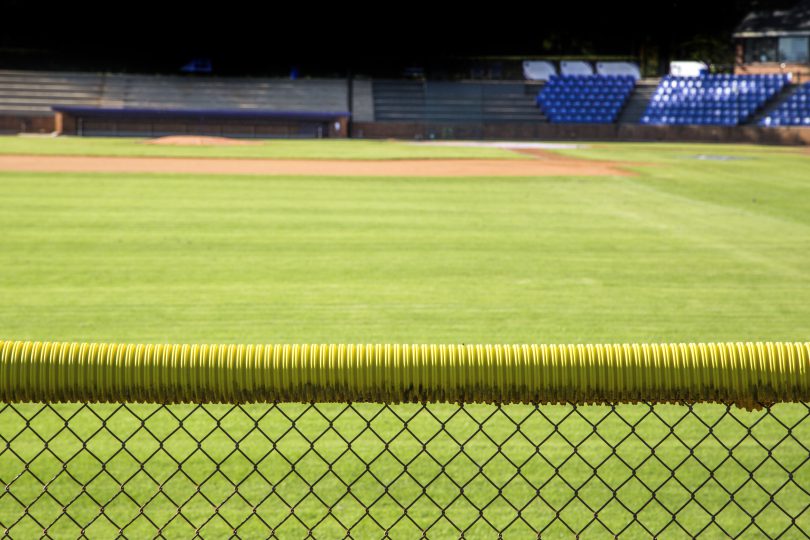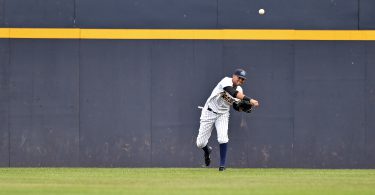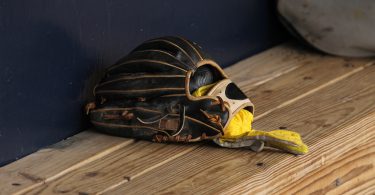The Situation:
The bases are empty and there are no outs in the top of the 4th. It’s a 0-0 game and the 5-hole hitter has a 2-0 count to start off the inning.
The Play:
The pitcher delivers a change-up, trying to fool the hitter and steal an out. The pitch floats in and despite catching the hitter out front, is elevated just enough so he can get the barrel on the ball. He laces the ball over the third baseman’s head, landing just inside the line and going all the way to the fence in the corner. The left fielder hustles over to the ball. As he gets to it, he realizes it’s stuck under the chain link fence, but with a lot of the baseball exposed. He decides to try to pull it out. As he grabs the ball, the tension on the fence is too much and the ball squirts under the fence. He tries to reach under to grab it, but can’t. He throws his hands up to let the umpires know it’s under the fence. Meanwhile, the batter continues around the bases all the way to home, as the fielders look on with confusion.
The Outcome:
The third base umpire, immediately went out to 1) get a better view on where the ball landed and 2) follow the play into the corner. He had a great view of the entire play and saw the outfielder reach for the ball before it went under the fence. After a brief meeting with all the umpires, they decide that the fielder played a role in knocking the ball under the fence and rule the play a home run. Despite protests from the left fielder and coach, it’s now a 1-0 game.
What Went Wrong:
Events like this seldom come into play, but when they do it always seems to play a factor in the outcome of the game. Knowing the ground rules and what might come into play in your area of the field before it actually happens is important. Know your area of the field and what obstacles or ground rules might come into play during the game.
If an umpire sees a player try to make a play on the ball before it disappears under the fence (or tarp, or bullpen bench, etc.), they might think the player was trying to force the ball under the fence to prevent an extra base. Many of these plays are judgment calls on the part of umpires, who are put into a tricky position. It can be hard to determine intent from the actions an umpire sees. If a ball is stuck or unplayable, the best thing to do is throw your hands up and let the umpire come out to inspect. If you have not messed with the ball at all, and it is being interfered with, they are likely to give you the benefit of the doubt. Talk about this with your coach ahead of time and see what they would like you to do. Identify problem areas and always make sure you understand the ground rules before the game starts. If you do that, you are well on your way to thinking the game!
We saw a similar situation play out in a high school playoff game in 2018. Luckily for the left fielder, the umpire had signaled for the double without checking on the ball before the player confusedly reached for the ball, picked it up, and threw it in as the runner circled around 3rd and scored.






